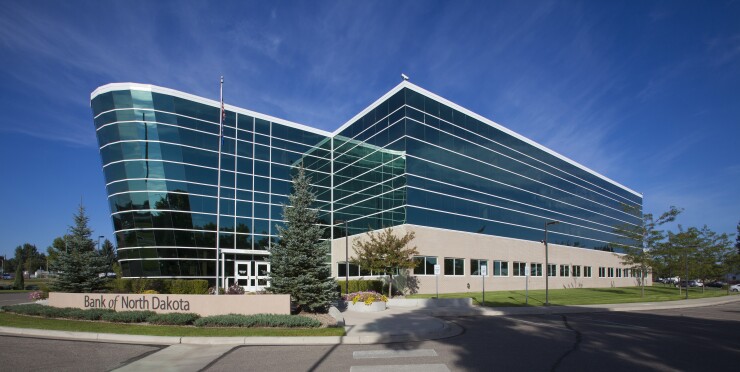- Key insight: North Dakota is joining Wyoming as states issuing stablecoins.
- What's at stake: Fiserv, the state's partner, is looking to scale its stablecoin platform.
- Forward look: Hundreds of banks and other firms are considering launching their own stablecoins.
North Dakota plans to issue its own stablecoin in collaboration with Fiserv, providing an early jolt for the bank technology company's stablecoin strategy and adding another state that will issue its own digital currency.
The Roughrider coin, named for
Interoperability is considered important in a market with a potential glut of stablecoin options, and North Dakota's stablecoin is expected to be interoperable with other digital currencies, according to a release. Spokespeople for North Dakota and Fiserv did not comment before deadline.
"As one of the first states to issue our own stablecoin backed by real money, North Dakota is taking a cutting-edge approach to creating a secure and efficient financial ecosystem for our citizens," said North Dakota Governor Kelly Armstrong, in a release. North Dakota is an early user of Fiserv's stablecoin technology. Fiserv in June announced it would launch its own stablecoin,
Since Fiserv's client roster includes thousands of banks, the firm is addressing concerns that stablecoins could drain traditional bank deposits.
"Whereas Fiserv is clearly moving aggressively to counter the risk that stablecoins will co-opt its financial institution customers' deposit bases, impairing growth, we think the stablecoin ecosystem will take time to evolve, likely forcing early participants to adjust strategy on the fly," analysts at William Blair said in a research note on Fiserv's stablecoin strategy, noting Fiserv's stablecoin and related technology could help it retain small- to medium-size banks.
There are also reasons North Dakota would want a stablecoin, namely the improved transaction processing that would come with it.
"The reasons that a state, or any other government, would want to use stablecoins is the same as for any business. There is a hope that stablecoins will drive down transaction costs and streamline money movement," Aaron Press, research director for Worldwide Payment Strategies, told American Banker.
North Dakota's stablecoin follows
In an earlier interview, Anthony Apollo, executive director of the Wyoming Stable Token Commission, told American Banker Wyoming's FRNT would support disaster recovery funding, disbursements and funding for schools. Apollo also drew a distinction between state stablecoins and central bank digital currencies, saying state coins do not involve issuing new money but instead represent a tokenized version of existing bank accounts.
"I can also see how a government would be interested in the transparency inherent in blockchain-based transactions," Press said. "North Dakota may also be thinking about the value of stablecoins for cross-border payments, especially given their commodity heavy economy and the importance of trade, and thus trade finance."






